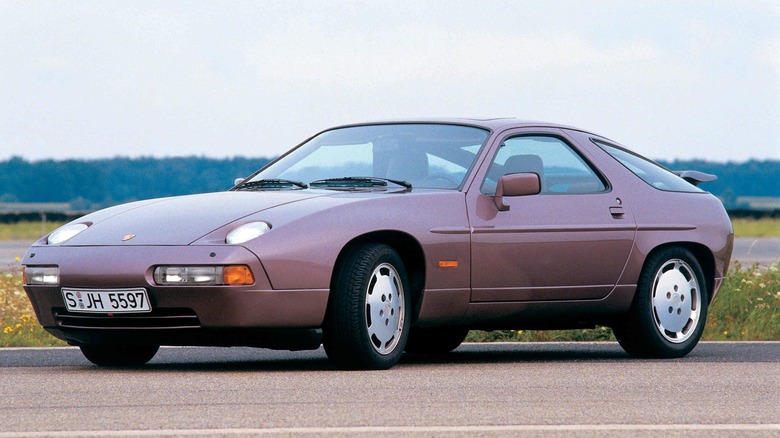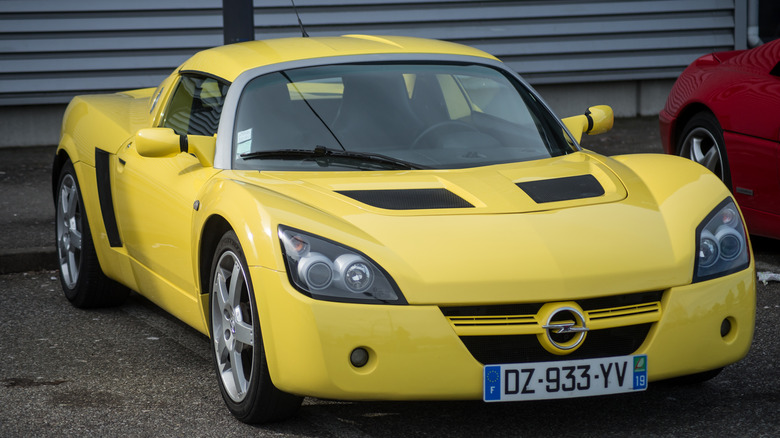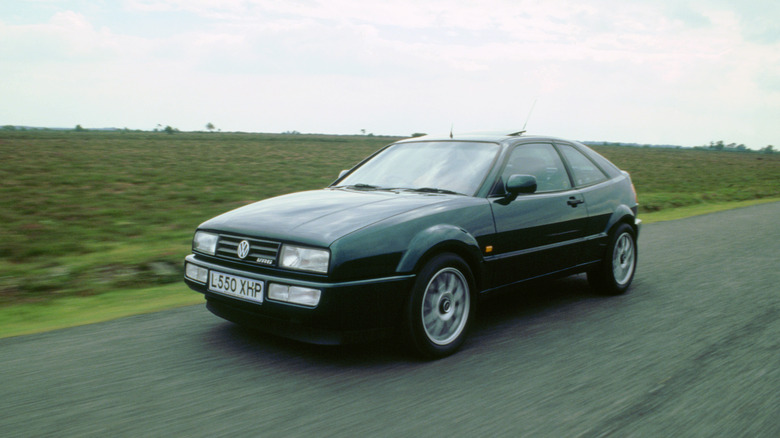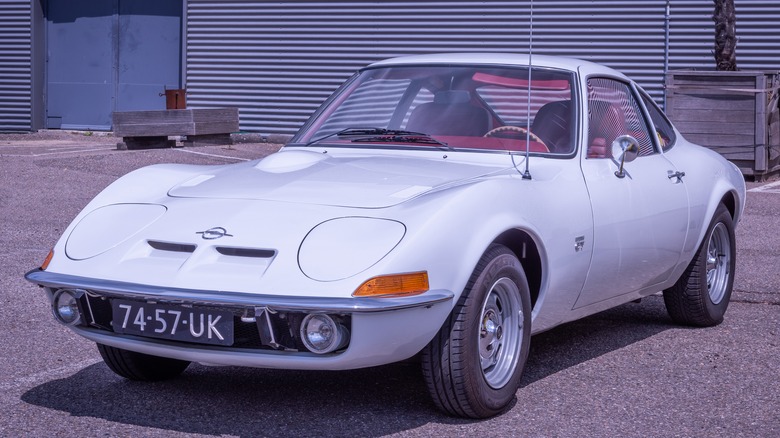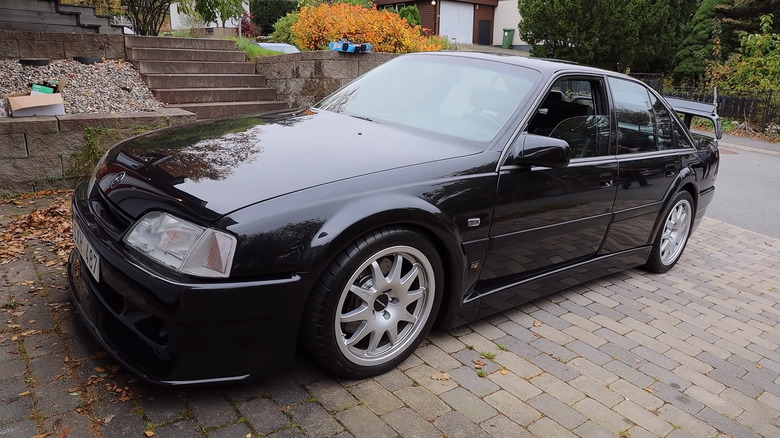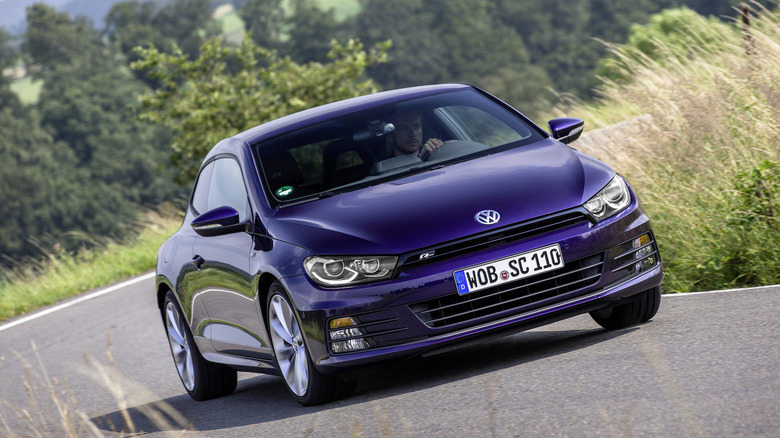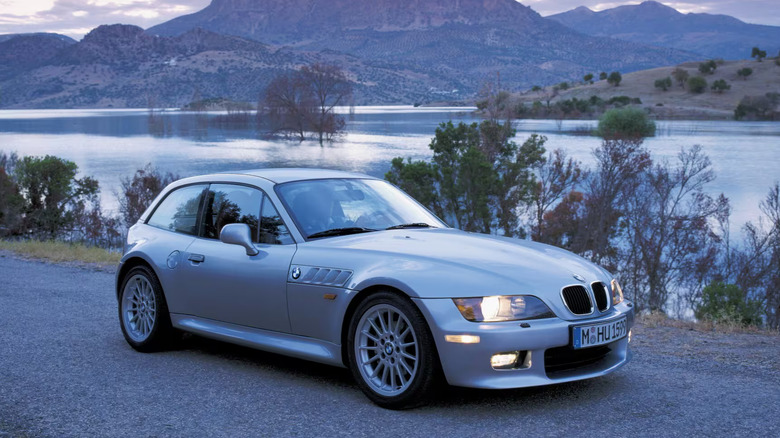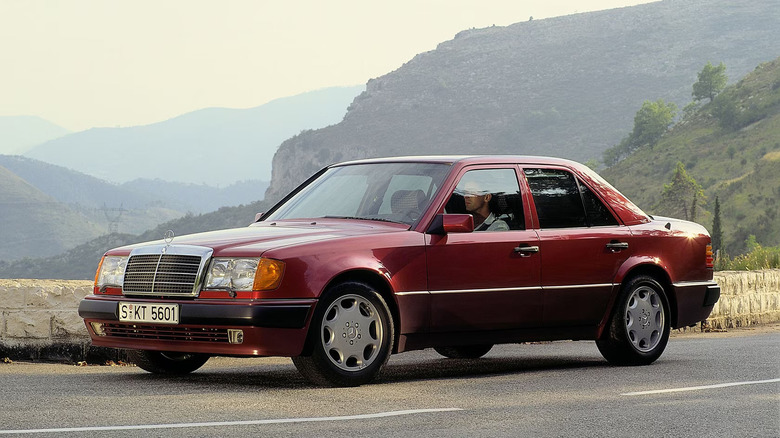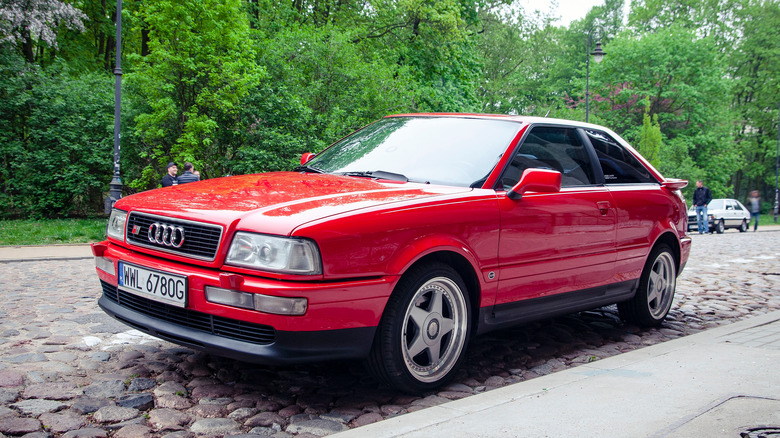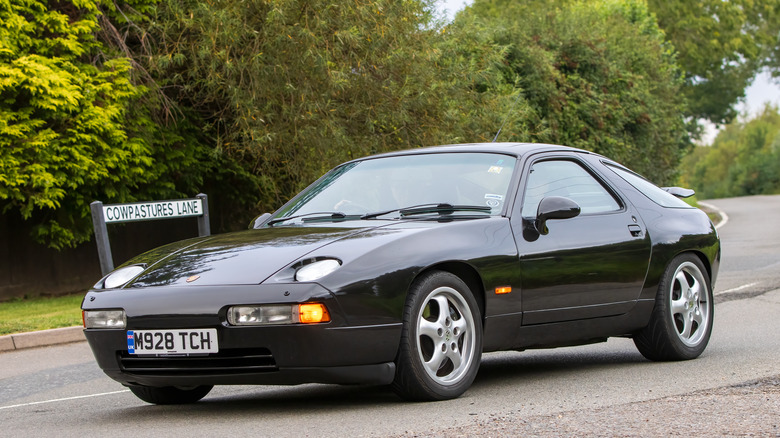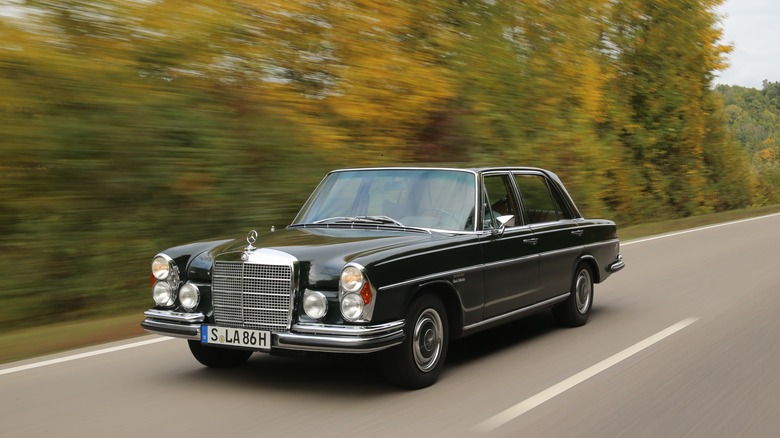10 Underrated German Cars That Deserve More Attention
The first car ever was invented in Germany, and since then, the country has been associated with the auto industry. Its exemplary engineers, known for always pushing the boundaries on what is possible in a four-wheel machine, created a "state-of-the-art engineering" mantra that serves as the backbone of almost every German vehicle. Accordingly, the country has produced dozens of outstanding cars throughout its 138-year history. So many, in fact, that some great German cars often go undeservedly overlooked.
Driven by that, we're contributing to the car enthusiast world by telling you about some underrated German cars we think deserve more attention. You might have heard about one or two of these, but the general theme is that they are generally underrated, either in the community and among the press, or just because they were overshadowed by other outstanding machines. It's quite a broad list, featuring vehicles with four, five, six, and eight cylinders, covering each end of the German auto industry's multifaceted car portfolio. So, let's get right to it!
Opel Speedster (2001 to 2006)
The Opel Speedster, also sold as the Vauxhall VX220 in the U.K., is a sports car that few people have heard of, but it definitely deserves its place in the pantheon of greats. It has all the perfect ingredients for a great driver's car. To begin with, it weighs only 1,918 pounds, thanks to the stiff aluminum chassis tub it borrowed from the Lotus Elise. Moreover, its engine sits in the middle for that perfect weight distribution, mated to a five-speed manual for a more engaging ride.
Opel offered the Speedster with two GM-sourced engine options because, at that time, General Motors owned the Opel brand. The base motor is a 2.2-liter naturally aspirated unit that produces only 147 hp, but that's still enough to propel the Speedster to 62 mph in just 5.9 seconds. However, there was also a 200-hp 2.0-liter turbocharged option, which cut the 0-62 mph sprint to 4.7 seconds. The most powerful version of the turbocharged engine, though, delivers 217 hp and takes only 4.2 seconds to reach 62 mph.
But there is more to the Speedster than just the sheer numbers. Thanks to the low weight, stiff suspension, and talkative steering, this sports car is a joy to drive on a twisty road. The Opel Speedster is a ray of sunshine from an era when the traditional sports car weighed almost twice as much. Expect it to rise in popularity in the coming years.
Volkswagen Corrado VR6 (1992 to 1995)
The Golf GTI is the biggest hot-hatch icon ever, as it was always able to blend practicality and fun in a small footprint. But back in the 1990s, VW made a more purposeful sports car based on the Golf platform — the Corrado. With a "fastback" rear design and a more aggressive front fascia when compared to the Golf II and III, the Corrado was meant to replace the Scirocco in the lineup.
The Corrado never cracked the American market, with VW returning to the Scirocco nameplate for the next generation, but it was a proper sportscar, nonetheless. That was particularly true for the VR6 versions, which used VW's unique six-cylinder engine with two-cylinder banks positioned at a narrow 15-degree angle. This made the VR6 engine shorter than an inline-6 and more compact than a V6, allowing VW to position it transversally and make it work with the front-wheel-drive Corrado.
The U.S. version of the Corrado came with a 2.8-liter VR6 engine, good for 178 hp @5,800 rpm and 177 lb-ft of torque @4,200 rpm. Paired with a five-speed manual, the sweet-sounding VR6 propelled the angular coupe to 60 mph in just 6.4 seconds and ran the quarter-mile in 15 seconds flat. Europeans got a hold of a more powerful, 2.9-liter version of the motor, though, producing 187 hp @5,800 rpm and 180 lb-ft of torque. Still, both interpretations were good to drive, with good body control and stability, despite driving only the front wheels.
Opel GT (1968 to 1973)
The Opel GT is a lightweight sports coupe few enthusiasts know about, simply because it was overshadowed by the Corvette. Naturally, the Vette was GM's darling, as it has always shown what the company is capable of regarding performance. However, GM's German subsidiary, Opel, had a different idea of a sports car; instead of numbers, its GT sports car was all about style and fun-to-drive dynamics in an affordable package. Think of it as the baby Corvette, and you won't be far off.
You could even call some version of the GT more of an "embryo Vette." The base model came with a measly 1.1-liter engine producing only 67 hp. It wasn't particularly fast, but the low curb weight of 1,880 pounds made up for the motor's lack of power. If you wanted more oomph, there was the 1900GT, packing a 1.9-liter engine with 102 hp and weighing 2,072 pounds and a four-speed manual. The "performance model" was good for a 0-60 mph time of 10 seconds and a 115-mph top speed. Still not quick, but okay for an affordable sports car of the era.
It's easy to overlook the Opel GT because of its not-so-stellar numbers. However, the styling more than makes up for the performance deficiencies. The good proportions, swooping body lines, and stylized pop-up headlights turn heads even today.
Opel Omega Evolution 500 (1991)
Ask someone to name three German sports sedans from the 1990s, and they'd probably mention the BMW M5 E34, Mercedes-Benz C36 AMG, and Audi S4. However, there is another sedan that is not often talked about and seriously underrated: the Opel Omega Evolution 500. This was a super-limited RWD sports sedan developed as a DTM homologation special, with quite a remarkable engine and a five-speed manual.
Namely, Opel made some serious changes to its 3.0-liter inline-6 unit from the regular Omega, amping it up to 227 hp @6,700 rpm and 206 lb-ft of torque @3,500 rpm. It was all done without any forced induction — here, it was all about the revolutions. To begin with, the engine has a very short 2.75-inch stroke and a relatively large 3.74-inch bore, meaning it was designed for high-end power. However, Opel engineers made it even "revvy-er" by reducing the weight of each piston by 150 grams and using a forged crank with eight counterweights, compared to 12 for the regular engine. Acceleration was very brisk for the era, with 0-60 mph taking 7.1 seconds.
But there was an even faster version with a 4.0-liter inline-6 engine, producing 272 hp @5,800 rpm and 291 lb-ft of torque @3,300 rpm. Although not as revvy, the larger engine provided a serious performance boost — 0-60 mph took only 5.5 seconds, and the top speed was a Porsche-beating 168 mph. This is fast even today, particularly when you consider the fact that the Omega A EVO 500 4.0i weighs 3,417 pounds.
Volkswagen Scirocco R (2009 to 2017)
The Scirocco R is rarely mentioned among the front-wheel-drive immortals, yet it's one of the finest sports cars of its type. Much like the Corrado, the Scirocco was envisioned as a more stylish version of the Golf, designed to appeal to a younger audience. Due to the lower roof and three-door hatchback body, it was always less practical than its sibling, but younger enthusiasts never cared about that, anyway. They wanted something eye-catching — a low-to-the-ground sports car with enough power to get the blood pumping — and the Scirocco delivered.
That is particularly true for the peppiest version, the Scirocco R. Packing VW's excellent 2.0-liter turbocharged engine with direct injection, the Scirocco R produces 280 hp @6,000 rpm and 258 lb-ft @2,500-5,000 rpm in the European version, with the North American version being 19 hp short. It is lighter than the sixth-gen Golf R by 300 pounds, largely thanks to the missing AWD hardware, and comes with either a 6-speed dual-clutch or a 6-speed manual. With the quicker dual-clutch option, it sprints to 60 mph in just 5.2 seconds despite driving only the front wheels.
However, the lower weight didn't only benefit performance. Coupled with the lower center of gravity, the Scirocco R is a much more agile sports car than the sixth-gen Golf R, with better handling dynamics. When new, the Scirocco was even cheaper than its more famous sibling, though it was undeservedly overlooked for not having AWD.
BMW Z3 M Coupe (1998 to 2002)
The clown-shoe-shaped BMW Z3 Coupe was built in secret. Imagine the shock people had when they first saw its bizarre styling — they must have reacted even more ferociously than we do today to BMW's latest design aesthetics. The unusually large windows and swoopy body lines make the car look like it's melting and give it a somewhat cartoonish vibe.
But peek under its theatrical body, and the Z3 Coupe is a much more serious prospect. That applies particularly to the "M" version, which has all the ingredients for the perfect sports car. Namely, this compact rear-wheel-drive machine, based on the Z3 Roadster, weighs only 2,800 pounds, yet it packs a relatively large 3.2-liter inline-6. The engine was massaged by BMW's M division to produce 325 hp @7,400 rpm in the facelifted S54 model, resulting in a 0-62 mph time of just 5.1 seconds.
The numbers tell only half the story here. The S54 engine, for instance, was borrowed from the E46 M3 and, as you would expect, provides an aural experience that's hard to match in a modern sports car. The five-speed manual also shifts precisely through the gears, the chassis balance is excellent, and the suspension is not overly stiff. Add to that a relatively large 410-liter cargo area, and you have the perfect recipe for a lightweight grand-touring machine.
Mercedes-Benz 500 E (1990 to 1993)
The BMW M5 has been stealing the spotlight among executive performance cars for four decades now. However, Mercedes-Benz isn't too far behind with its sports sedans, even if they are a bit underrated. Perhaps a prime example of that is the W124 500 E, one of the best sedans ever built.
Built in partnership with Porsche, the 500 E is a super sedan in the truest sense. Up front, it packs a naturally-aspirated 5.0-liter V8, borrowed from the 500 SL, but positioned lower in the engine bay thanks to the crankcase borrowed from Mercedes' 4.2-liter unit. However, the modifications necessary to fit the 5.0-liter unit in the engine bay didn't stop there — Mercedes and Porsche engineers also widened the front track by 2.2 inches. The engine was also equipped with a Bosch LH-Jetronic injection system, mass flow sensor (MAF), and electronic control.
As a result, it put out 320 hp @5,600 rpm and 347 lb-ft of torque @3,900 rpm. Unfortunately, Mercedes paired the engine with a four-speed automatic, probably thinking that it would better suit a high-performance executive sedan. Even so, the 500 E reached 62 mph in just 6.1 seconds, with the top speed being limited to 155 mph. Not bad for a luxurious four-seater (the differential was too big for a middle rear seat) with a smooth ride courtesy of a hydropneumatic self-leveling rear suspension.
Audi S2 Coupe (1991 to 1995)
The Sport Quattro and RS2 are perhaps the most legendary Audi sports cars of the 1980s and 1990s, and rightfully so. However, a less-known Audi sports car launched at the beginning of the 1990s, meant as a successor to the Sport Quattro while also serving as the sporty coupe variant of the RS2 sports wagon. It was called the S2 Coupe, and in our eyes, it deserved more attention from the enthusiast crowd. It had all the ingredients necessary for a good performance car.
The S2 wasn't well received at first, but that's not surprising, as it had the job of replacing a true icon in the Sport Quattro. Journalists deemed it too sterile compared to its predecessor and not any faster. Even its design was more conservative, with Audi taking few risks. Still, despite lacking the verve and rally pedigree of the Sport Quattro, the S2 is a more grown-up car, made to work better on public roads. The interior is more luxurious and impeccably finished, and the S2 rides better, too.
At launch, the S2 was heavy for a sports car, weighing 3,130 pounds. Today, though, that is considered lightweight, especially given that the S2 is equipped with Audi's Quattro AWD system. Under the bonnet, the S2 packs a turbocharged 2.2-liter inline-5, producing 220 hp initially (paired with a 5-speed manual) or 230 hp in the facelifted 1993-1995 version (6-speed manual). The result: a 0-62 mph time of 5.7 seconds and a top speed of 154 mph!
Porsche 928 (1978 to 1995)
Think of the best Porsches ever made. A few 911s will probably come to mind, and possibly some exotics like the 550 Spyder. Nevertheless, there is one often overlooked Porsche that definitely deserves its sport among the legends — the 928. A front-engine grand-touring machine, the 928 is easily the most underrated Porsche of all time. It even has a water-cooled V8 under the bonnet, which might upset Porsche purists, but it suits the car perfectly.
Despite carrying Porsche's highest-cylinder count to date, the 928, even in its high-performance GTS model, was never meant as a focused driving machine. Comfort and effortless progress are the names of the game with this model and, of course, speed — lots of it. With engines ranging from 4.5 to 5.4 liters in capacity and lightweight construction, the 928 ate Autobahns for lunch. The GTS model, for example, featured a 5.4-liter V8 with 350 hp and 369 lb-ft of torque and pushed the sleek-looking "Gran Turismo" to 171 mph without breaking a sweat.
But the 928 wasn't just famous for speed. Notably, it was the first production vehicle with plastic bumpers integrated into the body shape, like every modern vehicle today. The round pop-up headlights laid flat when not in use to improve aerodynamics, but their lenses were always visible, unlike most other sports cars of the era. The double-wishbone rear suspension was also a novelty in 1978, allowing for improved stability in the corners. All combined, it helped the 928 to become the most capable grand-touring sports car in the 1980s.
Mercedes-Benz 300 SEL 6.3 (1968 to 1972)
Mercedes-Benz has produced some legendary cars over the years, and many are considered among the best German cars in history. However, the company's portfolio of legends is even more abundant than what makes that list. Case in point, the Mercedes-Benz 300 SEL 6.3 — a pre-S63 AMG high-performance sleeper with a huge V8 under the bonnet, once termed "merely the best sedan in the world."
This proto-AMG sedan was not initially in the company's plans. Mercedes Engineer Erich Waxenberger installed a V8 in the company's luxury sedan on his own and then decided to show it to the top brass. They liked the idea, but that was nothing compared to its reception at the 1968 Geneva Motor Show — people were amazed.
A high-performance sedan was exciting already, but the numbers really stole the show. Under the bonnet sat a 6.3-liter V8 with advanced multipoint injection, producing 250 hp @4,000 rpm and 369 lb-ft of torque @2,800 rpm. Paired with a four-speed automatic, this heavy sedan reached 62 mph in just 6.5 seconds, with the speedometer needle touching the 137 mph mark on an open road, enough to make it the fastest four-door car in the world in its era.
The best thing about the 300 SEL 6.3 is that it looks sedate. Sure, it had wider tires and different headlights, but no body panels were changed and it still pulled like a freight train. The car laid the foundation for future fast sedans from Mercedes-Benz.
